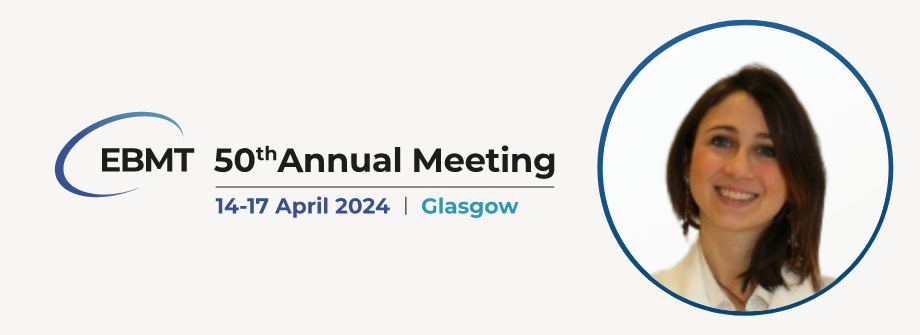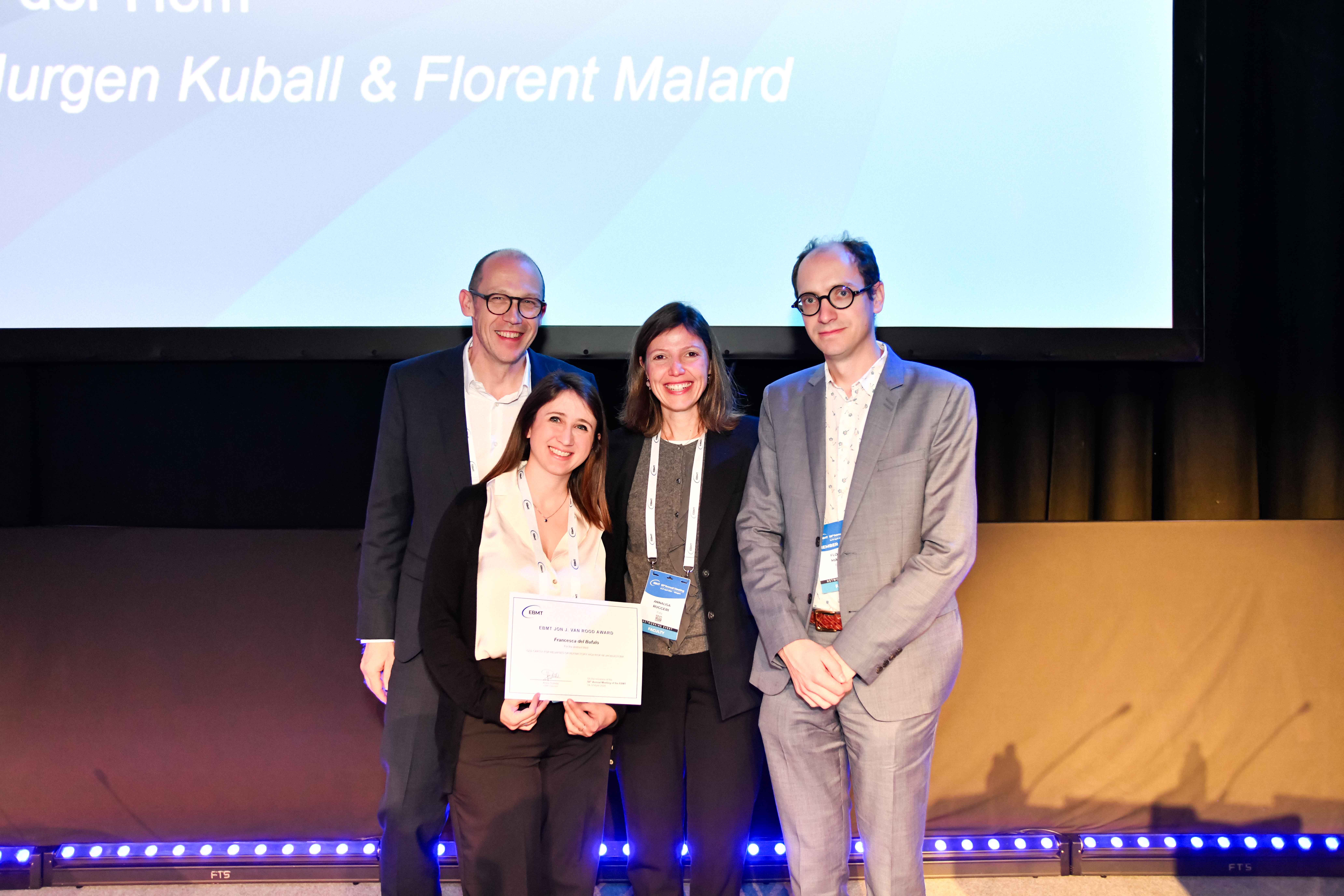
Francesca Del Bufalo
Bambino Gesù Children’s Hospital, Rome, Italy
What initially sparked your interest in the field of oncology, and motivated you to continue researching?
My interest towards the field of oncology originates from a personal experience that strongly impacted my life during adolescence. Unfortunately, the sister of my best friend was diagnosed with glioblastoma at the age of 12, and died 2 years later, after an extenuating fight with the disease. Since then, I have tried to turn the shock and all the strong emotions that this experience caused me into a positive energy, aimed at fighting these diseases.
I felt strongly motivated to join the fight to improve the survival of children with cancer, trying at the same time to develop innovative strategies to reduce the burden of toxicities. For this reason, I immediately fell in love with immunotherapy since I first learned about the fascinating concept, during one of the lessons I had in immunology in the School of Medicine, Campus Biomedico University, Rome, Italy. Then, I had, and still have, the privilege to be mentored by one of the pioneers of the field, Franco Locatelli, to be involved in the incredibly advanced projects he’s leading, both in the lab and at the bedside. I also had a life-changing training experience with other giants in the field, such as Malcolm Brenner. Last but not least, my daily work at the side of our patients, and taking care of them, is what fuels my motivation on a daily basis; with them, I experience the joy of all the promising potential of these approaches, together with the pain of every failure. This, in turn, becomes a strong incentive to research more and more, and to improve our strategies.
You were recently awarded the EBMT Jon J. van Rood Award, which celebrates outstanding contributions in the field of HCT and immunotherapy. Can you tell us more about the research that led you to win this award?
The project that led me to the incredible honour of being awarded with the EBMT’s Jon J. Van Rood Award is focused on the treatment of children affected by relapsed/refractory neuroblastoma, with an innovative immunotherapy approach represented by gene-modified T-cells expressing a chimeric antigen receptor (CAR) directed towards the disialoganglioside GD2 (GD2-CART01). This strategy is able to redirect the patient’s own T-cells towards neuroblastoma cells, which express the GD2 antigen at high levels, and to induce their cytotoxic killing.
At the Bambino Gesù Children’s Hospital, Rome, Italy, we generated our academic, third-generation construct in the Cell and Gene Therapy Laboratory led by Concetta Quintarelli. After a granular and meticulous preclinical work of evaluation of the best construct and culturing system, we proceeded to the technology transfer of the product to our academic GMP-facility, Officina Farmaceutica. The team of the Officina Farmaceutica did an amazing job at setting-up a robust and extremely effective manufacturing process, which was able to generate multiple doses of GD2-CART01 for each patient.
We then obtained approval from the Italian Competent Authority (Agenzia Italiana del Farmaco [AIFA]), and were able to test the approach in a Phase I/II clinical trial. The results of the interim analysis of the approach have been extremely encouraging: we showed that the approach is feasible, since we were able to obtain the drug product for all of the patients, and the toxicity profile was manageable. Moreover, the inclusion of the inducible safety switch suicide gene in our construct was shown to further increase the safety profile of the approach, enabling a prompt elimination of the gene-modified cells upon its activation. Most importantly, the approach proved effective in this cohort of extremely pre-treated patients, leading to an overall response rate of 63%, and to a promising long-term outcome, the 3-year overall and event-free survivals of patients who received the recommended dose being 60% and 36%, respectively.
Moreover, we observed that the burden of the disease at the moment of infusion of the GD2-CART01 is significantly impacting the activity of GD2-CART01. Patients treated with what we identified as low disease burden were able to reach a 3-year overall survival of 67%, and event-free survival of 58%. Considering the grim prognosis of these patients, with an historical long-term of survival <10%, these results are extremely encouraging. We are very motivated to consolidate this evidence and, at the same time, to further improve the results.
Such an incredible milestone would never have been possible without the leadership of Locatelli, the resources made available by the Bambino Gesù Children’s Hospital, and the expertise of all the people of the Precision Medicine Team in our department. It also would not have been possible without the trust of all of the families and children that were enrolled in this project, or the support of all of the institutions that believed in our projects, and gave us funding, which enabled us to take this project to this level. In particular, we are extremely grateful to AIFA-Independent Research, the Italian Ministry of Health, Associazione Italiana per la Ricerca sul Cancro (AIRC), and Fondazione Neuroblastoma for their support.
What impact do you hope your research will have on patient treatment and care?
My biggest hope is to reach the largest accessibility of GD2-CART01 for all of the patients that may benefit from its use and, in the future, to be able to substitute the heaviest steps of the treatment of these patients, such as high-dose chemotherapy with autologous stem cells transplantation, with this approach.
You will be presenting your research at the 50th Annual Meeting of the EBMT. How does your research contribute to the EBMT mission of innovation and education?
The EBMT is strongly involved in introducing the highest scientific innovation into the practice of the haematologist, and in training the new generation of doctors. In this regard, I have the honour and the privilege of participating in this important mission by sharing our work on GD2-CART01, one of the first CAR T-cell approaches to have shown promising results against a solid tumour. I am thrilled to have the possibility of discussing our projects with the main experts in the field, and of receiving insightful feedbacks from the EBMT community.
In your opinion, what are the most exciting changes that have been made to the EBMT scientific programme between 2023 and 2024?
The EBMT scientific programme has always been extremely exciting and scientifically advanced, delivering high-quality contents to the participant. This year, I am particularly looking forward to attending the session on gene therapy. I am also very curious to hear the presentations of the joint session of the EBMT, British Society for Haematology (BSH), and the British Society of Blood and Marrow Transplantation and Cellular Therapy (BSBMTCT) on COVID-19; and of the impact of AI on the future of transplant and cell therapy.
How is the EBMT using its position to encourage scientific dialogues on cellular and stem cell-based therapies?
The EBMT has the great merit of connecting all the major experts in the field of cell and stem cell-based therapies in an extremely collaborative and open network. Thanks to the major collaborative works that EBMT is promoting, all of the different players are able to participate in the discussion, to learn, and to promote scientific advancements at the same time. The inclusion of trainees and younger investigators, a true mission of the EBMT, is also essential, to further promote the growth of the field, and to generate future key opinion leaders.
What do you believe to be the current gaps in literature in your field? Are there any topics that merit greater attention?
The aspect that, in my opinion, warrants great attention at the moment is the characterisation of the tumour microenvironment of different tumours. The scientific interest on this aspect has been emerging in the last few years, and I believe that the research in this field will show some key biological aspects of these diseases, which will inform and shape the future treatment strategies, enhancing their potential.
As a researcher, where can we expect to see your focus lie in coming years?
I would like to further explore the potential of immunotherapies for the treatment of haematological and solid tumours. I am particularly interested in developing combinatorial approaches, and then exploring their safety and efficacy in clinical trials. In particular, I’m intrigued by the use of approaches targeting simultaneously different components of the tumour mass, not limiting to tumour cells, and in the combination of different approaches whose specificities could be synergistic.

